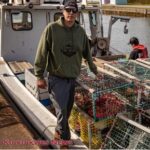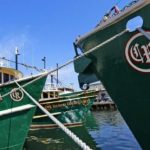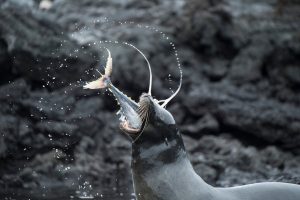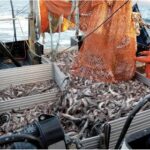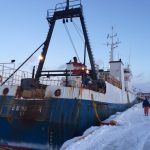Daily Archives: November 4, 2016
Water War: Florida and Georgia to blame for oyster loss
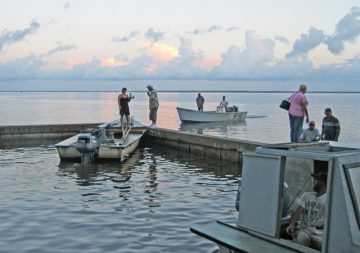 The 2010 Deepwater Horizon disaster threatened to spread oil from Texas to Florida and kill every shrimp, snapper and oyster in the Gulf of Mexico. Oystermen in Florida freaked out and, joined by fishermen from as far away as Texas, scraped every possible oyster — legal-sized or not — from the bottom of Apalachicola Bay. The still-poor condition of the bay and the oyster industry serves as the crux of the water war trial underway in this coastal New England town. Ralph Lancaster Jr., the special master assigned by the U.S. Supreme Court to remedy the 27-year-old interstate dispute, will ultimately decide who is to blame for the industry’s collapse. The trial’s first week ended Friday with a detailed examination of oyster fishing and Florida’s role in allowing the long-term degradation of the industry. It resumes Monday with the same focus. Florida says a lack of freshwater coming down the Apalachicola River from Georgia is to blame for the bay’s poor health. Georgia counters that over-fishing and lax management of oystering rules caused the damage. Read the story here 18:54
The 2010 Deepwater Horizon disaster threatened to spread oil from Texas to Florida and kill every shrimp, snapper and oyster in the Gulf of Mexico. Oystermen in Florida freaked out and, joined by fishermen from as far away as Texas, scraped every possible oyster — legal-sized or not — from the bottom of Apalachicola Bay. The still-poor condition of the bay and the oyster industry serves as the crux of the water war trial underway in this coastal New England town. Ralph Lancaster Jr., the special master assigned by the U.S. Supreme Court to remedy the 27-year-old interstate dispute, will ultimately decide who is to blame for the industry’s collapse. The trial’s first week ended Friday with a detailed examination of oyster fishing and Florida’s role in allowing the long-term degradation of the industry. It resumes Monday with the same focus. Florida says a lack of freshwater coming down the Apalachicola River from Georgia is to blame for the bay’s poor health. Georgia counters that over-fishing and lax management of oystering rules caused the damage. Read the story here 18:54
Illegal mud crab fishermen targeted as price reaches $70 a kilogram
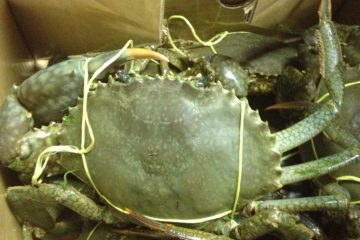 Authorities warn of stern action against those caught illegally catching mud crabs in New South Wales. With the crustaceans selling at $70 a kilogram, it is proving a lucrative crime for those offloading onto the black market. The NSW Department of Primary Industries’ director of fisheries compliance Patrick Tully said the area of most concern was unlicensed fishermen. “It’s illegal, unregulated and unreported,” he said. “We’re concerned that there are people using too many crab traps, not marking them so they can’t be found, and then selling them on what’s essentially the black market.” “At $70 a kilo one crab could be more than $70, they can grow to quite big animals. “It’s what we used to call the ‘shamateur’ — not a licensed fisherman, not really a recreational fisherman, just that person in the middle who is exploiting the resource at the expense of others.” Read the story here 15:34
Authorities warn of stern action against those caught illegally catching mud crabs in New South Wales. With the crustaceans selling at $70 a kilogram, it is proving a lucrative crime for those offloading onto the black market. The NSW Department of Primary Industries’ director of fisheries compliance Patrick Tully said the area of most concern was unlicensed fishermen. “It’s illegal, unregulated and unreported,” he said. “We’re concerned that there are people using too many crab traps, not marking them so they can’t be found, and then selling them on what’s essentially the black market.” “At $70 a kilo one crab could be more than $70, they can grow to quite big animals. “It’s what we used to call the ‘shamateur’ — not a licensed fisherman, not really a recreational fisherman, just that person in the middle who is exploiting the resource at the expense of others.” Read the story here 15:34

Fishing vessel fire in Homer harbor
A fishing vessel was engulfed in flames early Thursday at the Homer Port and Harbor, resulting in what the harbormaster there believes is “a complete loss” of the boat. “It was reported that they heard an explosion and saw fire,” Hawkins said. That first call was followed closely by another call to police from a harbor officer, he said. The cause of the fire aboard the 32-foot Linda Kay is not yet known, he said, and there were no reports of injuries or damage to other vessels or the dock. The Linda Kay was docked at D float, near the Salty Dawg Saloon, Hawkins said. Read the rest here 15:20
Remains of fisherman missing at sea for a year found – inquest to be held next year
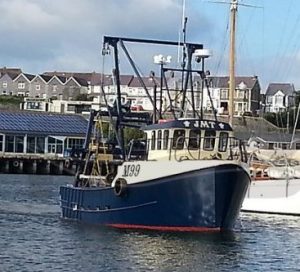 The remains of a missing fisherman were found a year after his vessel sank four miles off Rame Head. The scalloper JMT – skippered by 22-year-old Michael Hill and crewed by Shane Hooper – sank at around 3pm on July 10, 2015. The body of Mr Hooper, a 33-year-old father of three from Teignmouth, was found in a life belt by the RNLI after an air and sea search. Despite the wreck being lifted from the seabed, the body of Mr Hill, also from Teignmouth was not found. The vessel was owned by Mr Hill’s father, Mickey. Remains of Mr Hill were found by a fishing vessel on July 6 this year. The Herald has learned the vessel, from Falmouth, was trawling in the area of where the JMT went down on July 6 this year. As it trawled for scallops, the crew dredged up debris, including human remains. Read the rest here 14:38
The remains of a missing fisherman were found a year after his vessel sank four miles off Rame Head. The scalloper JMT – skippered by 22-year-old Michael Hill and crewed by Shane Hooper – sank at around 3pm on July 10, 2015. The body of Mr Hooper, a 33-year-old father of three from Teignmouth, was found in a life belt by the RNLI after an air and sea search. Despite the wreck being lifted from the seabed, the body of Mr Hill, also from Teignmouth was not found. The vessel was owned by Mr Hill’s father, Mickey. Remains of Mr Hill were found by a fishing vessel on July 6 this year. The Herald has learned the vessel, from Falmouth, was trawling in the area of where the JMT went down on July 6 this year. As it trawled for scallops, the crew dredged up debris, including human remains. Read the rest here 14:38
One-Hand Knife Opening Tactics: Looking Back
 A curious feature of some state laws outlawing switchblades is the exemption provided therein for hunters and fishermen. This is because, on some level, even politicians understand the utility of a one-hand knife. It is for this reason that one-hand blades have become the standard for knives carried by armed citizens. The one-hand-opening “tactical folder” is now the industry standard, but this has not always been so. Armed citizens were carrying backup blades well before the market answered the need for a general purpose utility folder that is also suitable for self-defense. Especially in the days before one-hand knives were common, the fixed blade knife might have seemed the best option. To some, it still does. A fixed blade requires no fine motor skills to deploy and is faster to access than a folder. Read the article here 12:09
A curious feature of some state laws outlawing switchblades is the exemption provided therein for hunters and fishermen. This is because, on some level, even politicians understand the utility of a one-hand knife. It is for this reason that one-hand blades have become the standard for knives carried by armed citizens. The one-hand-opening “tactical folder” is now the industry standard, but this has not always been so. Armed citizens were carrying backup blades well before the market answered the need for a general purpose utility folder that is also suitable for self-defense. Especially in the days before one-hand knives were common, the fixed blade knife might have seemed the best option. To some, it still does. A fixed blade requires no fine motor skills to deploy and is faster to access than a folder. Read the article here 12:09
Fishing over the line – Digby DFO seizes 195 traps and $8,000 worth of lobster
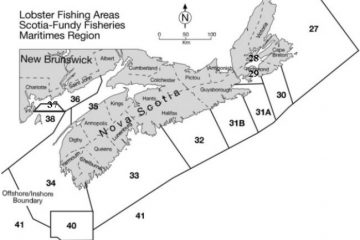 Fishery officers arrested a lobster fisherman for setting traps on the New Brunswick side of the Bay of Fundy a week before that area opens. Digby fishery officers seized 195 traps Nov. 2 and 3 after conducting a patrol of the line between Lobster Fishing Area (LFA) 35 and LFA 36 and inspecting gear. Fishery officer Jacklyn Titus says the officers found a number of trawls in a closed area. As a result of inspection of some of the gear, fishery officers arrested one individual and seized approximately 1,300 pounds of lobster. The Department of Fisheries has sold that catch and will hold the money in trust while awaiting the outcome of court proceedings. Shore price is about $6.50 these days making the lobster worth about $8,450. Titus says charges are pending. Read the rest here 11:38
Fishery officers arrested a lobster fisherman for setting traps on the New Brunswick side of the Bay of Fundy a week before that area opens. Digby fishery officers seized 195 traps Nov. 2 and 3 after conducting a patrol of the line between Lobster Fishing Area (LFA) 35 and LFA 36 and inspecting gear. Fishery officer Jacklyn Titus says the officers found a number of trawls in a closed area. As a result of inspection of some of the gear, fishery officers arrested one individual and seized approximately 1,300 pounds of lobster. The Department of Fisheries has sold that catch and will hold the money in trust while awaiting the outcome of court proceedings. Shore price is about $6.50 these days making the lobster worth about $8,450. Titus says charges are pending. Read the rest here 11:38
Cause of Action Institute sues NOAA For New England Fishery Management Council information on member selection
 In its July 13 FOIA request, Cause of Action sought information on how the Secretary of Commerce and NOAA select members in the New England Fishery Management Council, which regulates fishing off the coasts of Maine, New Hampshire, Massachusetts, Rhode Island and Connecticut. “The records at issue in this case, which include records of communication between high-ranking agency officials, will permit the public to understand how the most recent round of membership selection for the NEFMC was handled, and whether that process was at all tinged by political considerations or other untoward government action,” the complaint states. Cause of Action claims that NOAA has never disclosed information about how it selects members of the eight regional regulatory councils operating under the Magnuson-Stevens Fishery Conservation and Management Act, and that the membership might not accurately represent the fishing industry. Read the rest here 10:44
In its July 13 FOIA request, Cause of Action sought information on how the Secretary of Commerce and NOAA select members in the New England Fishery Management Council, which regulates fishing off the coasts of Maine, New Hampshire, Massachusetts, Rhode Island and Connecticut. “The records at issue in this case, which include records of communication between high-ranking agency officials, will permit the public to understand how the most recent round of membership selection for the NEFMC was handled, and whether that process was at all tinged by political considerations or other untoward government action,” the complaint states. Cause of Action claims that NOAA has never disclosed information about how it selects members of the eight regional regulatory councils operating under the Magnuson-Stevens Fishery Conservation and Management Act, and that the membership might not accurately represent the fishing industry. Read the rest here 10:44
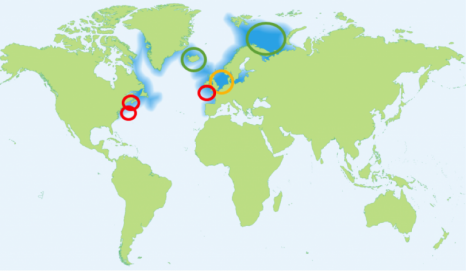
Atlantic Cod: The Good, The Bad, and the Rebuilding – Part 1 and 2
“Fishing pressures…or environmental pressures…are different from place to place even within what is considered to be a single management area, and that effect is multiplied when you consider going from one management area to another” says Coby Needle. This implies that there is no singular reason for the observed differences in stock status. However, there do seem to be general trends based on the latitudinal position of stocks. In general, the northern stocks are doing better than the southern populations. “In the NE Atlantic, the more northerly stocks like Barents Sea and Icelandic cod are generally in much better shape than the ones further south…There is some long-term environmental trend affecting their recovery” says Robin Cook. However, “it’s not as simple as it was 2 or 3 years ago when we probably thought it was all related to global change; the southern stocks were suffering while the northern stocks were benefitting from a warming Arctic” says Chris Zimmermann. One example is the disappearance of North Sea cod from the southern spawning grounds, where there has been no spawning activity for the last 10-15 years. “Newspapers say ‘there’s no spawning of cod in the North Sea at all.’ That’s not the case – it’s just the southern spawning grounds. That’s certainly related to global change” says Chris Zimmermann. “Distributions are further north because the more southern populations are less successful” Robin Cook agrees. Five Audio reports, Read the rest here 09:39 Read Part 1 here
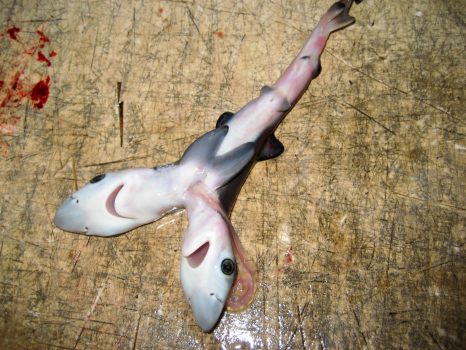
Two-Headed Sharks Keep Popping Up—No One Knows Why
Two-headed sharks may sound like a figment of the big screen, but they exist—and more are turning up worldwide, scientists say. A few years ago off Florida, fishermen hauled in a bull shark whose uterus contained a two-headed fetus. In 2008, another fisherman discovered a two-headed blue shark embryo in the Indian Ocean. And a 2011 study described conjoined twins discovered in blue sharks caught in the Gulf of California and northwestern Mexico. Blue sharks have produced the most recorded two-headed embryos because they carry so many babies—up to 50 at at time, says study leader Felipe Galván-Magaña, of the National Polytechnic Institute in Mexico. Nicolas Ehemann, a master’s student at the National Polytechnic Institute in Mexico, believes that if the two-headed fetuses are more prevalent in nature, then overfishing is a strong culprit as it may cause the gene pool to shrink. Read the rest here 09:03

































